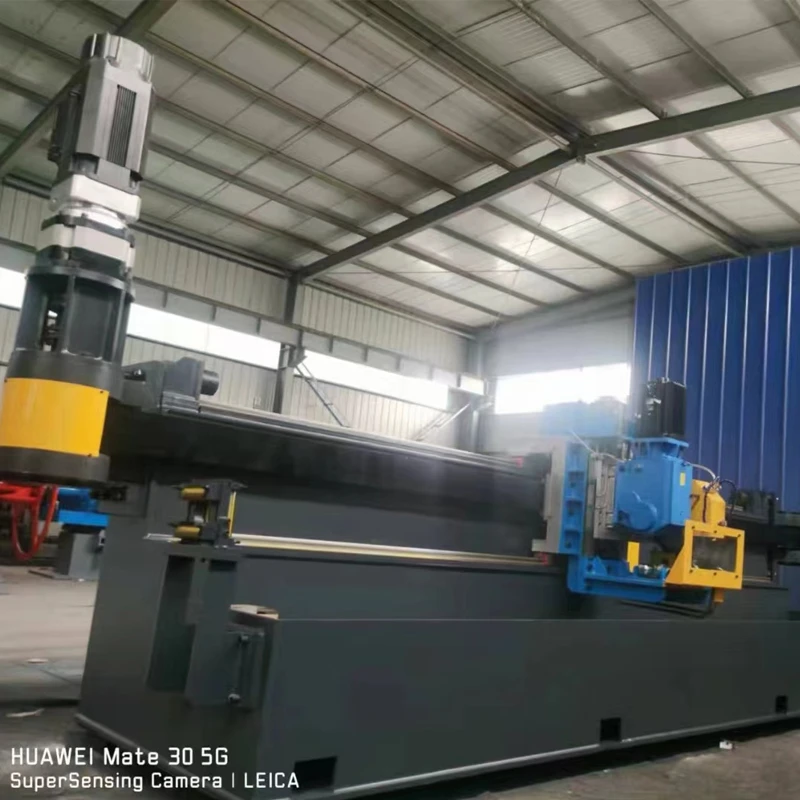Innovative Solutions in Pop Roll Forming Machinery for Enhanced Production Efficiency
Understanding Pop Roll Forming Machines A Comprehensive Overview
Pop roll forming machines have emerged as an essential tool in the manufacturing industry, particularly for producing high-quality metal components. This technology is versatile, efficient, and cost-effective, making it a preferred choice for a wide variety of applications. In this article, we will delve into the fundamentals of pop roll forming machines, their operational principles, advantages, applications, and maintenance tips.
What is a Pop Roll Forming Machine?
A pop roll forming machine is a type of manufacturing equipment used to shape metal sheets into specific profiles by passing them through a series of rollers. The term pop typically refers to the types of metal profiles that are commonly produced, which are often lightweight, hollow structures used in construction and automotive applications. These machines are particularly noted for their ability to create consistent and precise shapes, which are critical for ensuring product quality.
How Does a Pop Roll Forming Machine Work?
The operation of a pop roll forming machine begins with feeding a flat metal sheet into the machine. The sheet is typically made of steel, aluminum, or other malleable metals. As the sheet passes through a series of rollers, it is gradually shaped into the desired profile. Each roller plays a specific role, bending the metal at precise angles until the final shape is achieved.
1. Feeding Mechanism The machine is equipped with a feeding mechanism that ensures the metal sheet is fed consistently and accurately. This is crucial as any misalignment could lead to defects in the final product.
2. Roller Setup The heart of the pop roll forming machine is its roller setup. Each roller is designed to perform a specific bending or shaping function, and they are typically arranged in a sequence that gradually transforms the flat sheet into the desired profile.
3. Cutting and Finishing Once the desired shape is achieved, the machine may include automated cutting mechanisms to trim the product to its final length. Additionally, finishing processes like welding or punching may be integrated into the production line for added functionality.
Advantages of Using Pop Roll Forming Machines
The adoption of pop roll forming machines comes with numerous advantages
1. Precision and Consistency The automation involved in the roll forming process ensures high precision and repeatability, which is crucial for applications where dimensional accuracy is paramount.
2. Material Efficiency Roll forming produces minimal waste compared to traditional metal shaping methods. This is particularly important in industries where material costs are significant.
3. Versatility Pop roll forming machines can produce a wide range of profiles and shapes, making them suitable for diverse applications, from automotive components to building materials.
pop roll forming machine

4. High Production Rates These machines operate at high speeds, allowing manufacturers to produce large volumes in shorter timeframes, thereby increasing overall productivity.
5. Durability and Strength The roll forming process often enhances the strength of the material, making the final products more durable and suitable for demanding applications.
Applications of Pop Roll Forming Machines
The versatility of pop roll forming machines translates into a broad array of applications across various industries
- Construction They are widely used to manufacture steel studs, tracks, and other structural components used in building frameworks. - Automotive In the automotive industry, roll forming machines create parts like chassis components, reinforcements, and trim. - Electronics The machines produce casing and support structures for electronic devices. - Furniture Custom metal profiles for furniture designs are another popular use, enhancing both aesthetics and functionality.
Maintenance Tips for Pop Roll Forming Machines
To ensure longevity and optimal performance, regular maintenance of pop roll forming machines is essential
1. Regular Inspections Routinely check the rollers for wear and tear. Any signs of damage should be addressed immediately to prevent defects in production. 2. Lubrication Proper lubrication of moving parts is vital to reduce friction and wear. Ensure that lubrication schedules are followed.
3. Alignment Checks Regular alignment checks help ensure that the machine operates efficiently and produces components with high precision.
4. Cleanliness Keeping the machine clean will prevent debris from accumulating, which can cause jams or operational issues.
5. Training for Operators Proper training for operators on the machine's functions and maintenance procedures can enhance productivity and reduce the likelihood of errors.
Conclusion
In summary, pop roll forming machines play a critical role in modern manufacturing, providing a combination of precision, efficiency, and versatility. Their ability to create complex shapes with minimal waste makes them invaluable in numerous industries, from construction to automotive. With ongoing advancements in technology, these machines are poised to become even more integral to the manufacturing process. Investing in proper maintenance and operator training will ensure that the machines remain efficient and productive for years to come.
-
High Frequency Straight Seam Welded Pipe Production Line-BzZhou Xinghua Machinery Equipment Manufacturing Co., LTD.|line pipe steel&welded gas pipeNewsJul.30,2025
-
High Frequency Straight Seam Welded Pipe Production Line-BzZhou Xinghua Machinery Equipment Manufacturing Co., LTD.|High Precision&Automated SolutionsNewsJul.30,2025
-
High Frequency Straight Seam Welded Pipe Production Line - BzZhou Xinghua Machinery Equipment Manufacturing Co., Ltd.NewsJul.30,2025
-
High Frequency Straight Seam Welded Pipe Production Line-BzZhou Xinghua Machinery Equipment Manufacturing Co., LTD.|Precision Welding, High EfficiencyNewsJul.30,2025
-
High Frequency Straight Seam Welded Pipe Production Line|BzZhou Xinghua|Precision Welding&EfficiencyNewsJul.30,2025
-
High Frequency Straight Seam Welded Pipe Production Line - BzZhou Xinghua|Precision Engineering&EfficiencyNewsJul.30,2025


